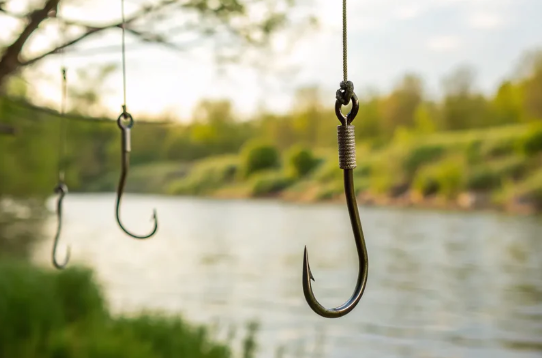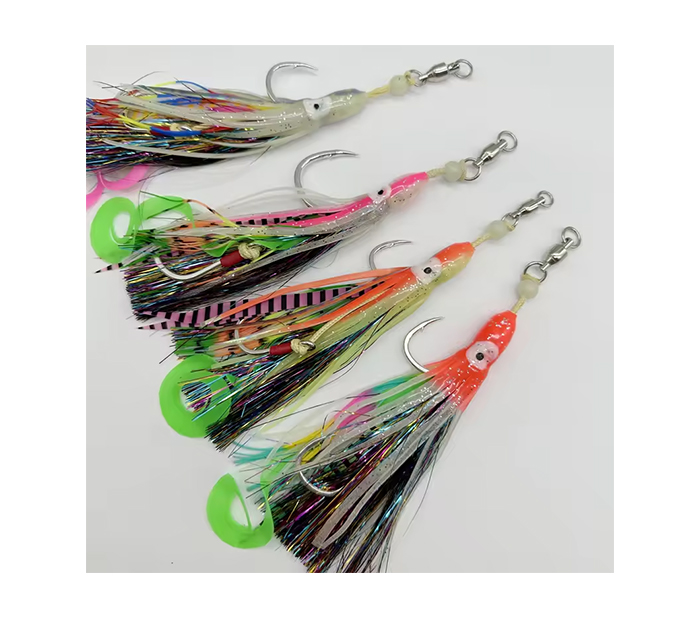Fishing is more than dropping a line in the water. It’s a skill where every piece of gear matters. The fishing hook is a game-changer. Choosing the right one can turn a missed bite into a solid catch, especially when matched to the fish, method, and environment. Whether flipping jigs through weeds or dragging baits over rocks, the hook makes all the difference. For quality hooks built on experience, Laike is a solid pick. With over 10 years in the industry, Laike offers more than 500 fishing products shipped worldwide. Their own factory and ties with over 200 suppliers ensure tight quality control and fast delivery.

Why Does Hook Selection Matter in Different Fishing Techniques?
Each fishing style needs a hook that fits its demands. Whether it’s staying snag-free, holding strong, or moving fast, the right hook boosts the catch rate.
Matching Hook Design to Technique Efficiency
Hooks aren’t universal. Flipping Jigs have a sharp, pointed head that cuts through weeds in shallow waters. Swim jigs mimic baitfish, working best with steady pulls and quick twitches. Circle hooks suit live bait fishing, hooking fish in the lip for easy release. Spinnerbait hooks are made for fast strikes from fish chasing moving lures. Picking the wrong hook can lead to snags or missed fish.
Balancing Hook Strength and Flexibility
Strength is vital for big fish or tough spots. High carbon steel gives hooks toughness and wear resistance. But flexibility is key too. A hook too stiff might snap; one too soft could bend. The right mix keeps the hook sharp and intact, even when a fish fights hard in heavy cover.
Enhancing Presentation with the Right Hook Type
Presentation is about making bait look alive. High carbon steel hooks have smooth curves, slicing through water with less drag. This lets baits move like real prey. Offset or worm hooks keep soft plastics looking natural during retrieves. Treble hooks work with crankbaits, grabbing fish from multiple angles. In snag-heavy areas, they can catch on debris, so choosing wisely is crucial.

How Do Fish Species Influence Hook Choice?
Fish behave differently, from how they bite to their mouth shape. This guides hook selection.
Mouth Structure and Feeding Behavior
Bass have wide mouths that inhale baits, making wide-gap hooks ideal. Trout, with softer mouths, need thin wire hooks with sharp tips to avoid tearing free. The hook tip, sharp as a blade, pierces fast, critical for tough-jawed fish like catfish or carp. Cautious feeders need precise hooks, while aggressive biters demand sturdier ones.
Adapting Hook Size to Targeted Species
Hook size matches bait and fish size. Big predators like muskies need larger hooks for bigger baits without slowing action. Small fish like bluegill require tiny hooks that fit their mouths but still pierce well. Wrong sizing throws off presentation or fails to hold fish.
Selecting Material Based on Species Aggressiveness
Tough fish like pike or saltwater species need rust-resistant hooks. Stainless steel or plated high-carbon steel works best. The surface of the fishhook gets a coating, like white nickel or gold, to fight corrosion. Gold’s shine also attracts fish in dim water. For less aggressive freshwater fish, lighter materials can do, but durability matters for big catches.
What Are the Key Features of a High-Performance Fishing Hook?
A top-notch hook doesn’t just catch fish. It performs reliably and lasts through tough conditions.
Sharpness and Point Retention
A hook’s tip must be razor-sharp for quick bites. High carbon steel hooks stay sharp after heavy use, vital for hard-mouthed fish like tarpon. Barbed hooks lock fish in tight, like an inescapable trap. A dull hook can cost a catch, so retention is everything.
Corrosion Resistance and Durability
Saltwater eats gear fast. Hooks with gold or nickel coatings last longer, even in harsh conditions. Gold’s shine draws fish in low light. Durability means no bending or breaking under pressure, keeping hooks ready for the next fight.
Weight Distribution and Balance
A hook’s weight affects casting and bait movement. Lead Jig Head Fishing Hooks keep baits swimming at the right angle. Too much weight sinks lures too fast; too little misses the bottom. Balanced hooks make casts smoother and baits act natural, tricking wary fish.

When Should You Use Jig Head Hooks?
Jig head hooks shine when mimicking bottom-dwellers like crawfish or small fish.
Ideal Conditions for Jig Head Applications
Jigging works in fresh and saltwater, especially in cold months when fish stay low. In clear, chilly water, smaller, lighter jigs avoid spooking fish. These hooks excel in vertical fishing, where depth control is key.
Benefits of Lead Jig Head Fishing Hooks
Weighing 7g to 35g, these jig heads adjust fall speed for depth or current. Paired with soft baits, they swing wide for lifelike action. The lead design mimics fleeing prey, tempting fish to strike.
Target Species Best Suited for Jig Head Hooks
Bass love jigs that act like crawfish near rocks or logs. Perch and walleye hit jigs when feeding low. Saltwater fish like flounder also strike jigs bounced near the bottom. Matching weight and size to the spot is key.
What Makes Octopus Squid Skirts Jigs Effective?
These colorful jigs mix motion and flash, perfect for murky water or deeper zones.
Visual Attraction and Movement in Water
The skirts flutter naturally, even on slow pulls. Octopus Squid Skirts Jigs use PVC skirts with high-carbon steel hooks, blending flexibility and strength. This wiggle mimics squid or small fish, tempting predators like snapper or grouper.

Versatility Across Saltwater and Freshwater Species
Applicable places: Applicable to both freshwater and saltwater fishing. From reef fish offshore to bass in lakes, their lively profile draws bites. The skirts add flair fish can’t resist.
Advantages of Laike’s Octopus Squid Skirts Jig Design
In sizes 2/0 to 5/0# at 10g, these jigs are light for finesse but tough for fights. Material: High Carbon Steel + PVC. Color options boost visibility in varied light, from bright days to dim evenings.
How Do Environmental Factors Affect Hook Selection?
Water conditions change fast. Smart hook choices keep the bite strong.
Water Clarity and Light Penetration
Clear water needs subtle setups. In winter, when water is clear, natural colors and smaller hooks blend in. In muddy water, bright colors or shiny finishes like gold stand out when visibility drops.
Depth and Current Considerations
Deeper spots need heavier jig heads to stay low. A jig over 14 grams sinks too fast in shallow water, scaring fish. The right weight holds position in current without drifting off.
Temperature and Seasonal Behavior of Fish
Cold water slows fish, so dragging baits low works best. Winter jig techniques crawl along the bottom, mimicking slow prey. In warm months, fast retrieves with spinnerbait or treble hooks trigger quick bites from active fish.
FAQ
Q1: Can jig head hooks work in saltwater?
A: Yes, they’re great in fresh and saltwater, mimicking bottom prey that draws fish.
Q2: Are skirted jigs just for offshore?
A: No, they work in freshwater too. Their flash pulls in bass as well as saltwater fish like grouper.
Q3: What hook is best for heavy weeds?
A: Flipping jigs or weedless hooks with pointed heads glide through cover while hooking fish securely.




